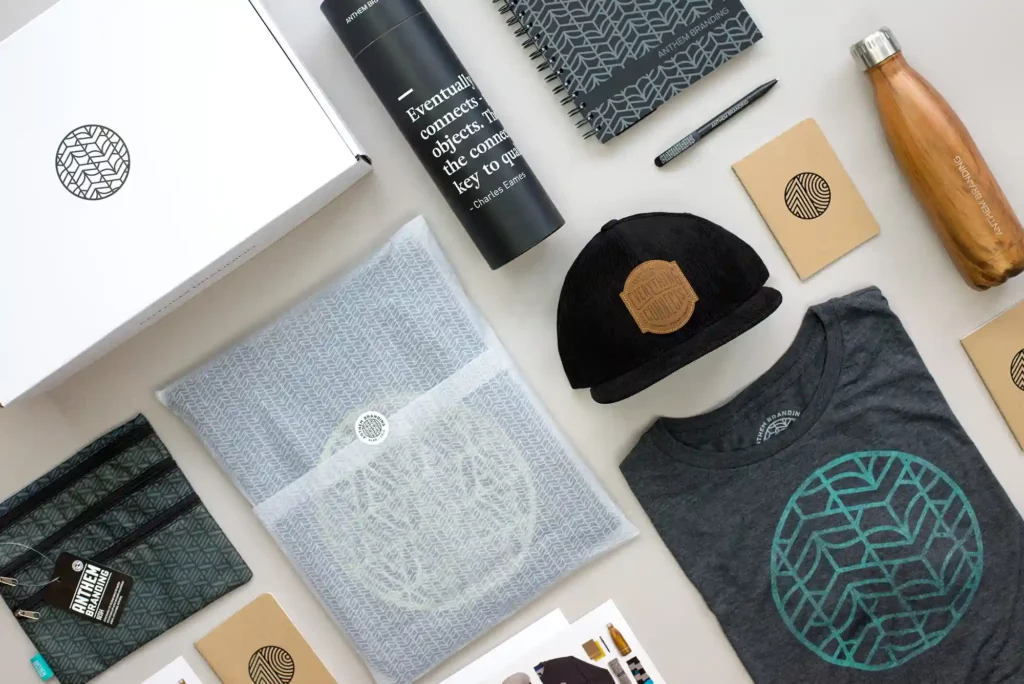If there’s one time-honored fact of life that’s able to survive world wars, major economic reorganizations, cataclysmic weather events, techno-revolutions, and global pandemics, it’s this: people like stuff.
Marketers have known this since the beginning of our relationship with stuff, and have used it as part of their business strategy since the beginning. If you have stuff to sell, what better way to sell it than to represent it in ways that people really connect with? Or better yet, give people things for free that they can both use in their daily life, that will also remind them of who your brand is? Even if your mode of business has very little, or even nothing to do with stuff — even if you’re not selling stuff at all — stuff sells. That’s why you probably own a pen, or a USB stick, or a tote bag with an insurance company’s name on it.
If you talk to Gareth Parkin, CEO of the U.K.’s leading vendor of promo products GoPromotional, he’ll back that up. “Even if the times change and people don’t exactly like the same things they used to, they still like things. Sometimes, if you really want to make an impact, you just have to tune in to what kinds of products people like, and slap your name on it.” So before you hone in on the right promo product for your target audience, let’s take a look at the products you should consider for your arsenal of stuff.
1. Fashion Items
Yes, this is obvious, but it’s not as simple as t-shirts and baseball caps. In fact, avoid t-shirts and baseball caps. They are no longer cool; they are anathema to your cause. Focus instead on up-and-coming fashion trends, and remember, it’s branded product marketing; no one will blame you if your idea of up-and-coming is a little late to the party. Swap that baseball cap for a bucket hat. Trade the t-shirt for a pair of tube socks. As for the tote bag… keep it, actually, because those are still great.
It’s your job to mine the trends of Generation Z and extract their keystone fashion items because even if your target demographic isn’t under 25, millennials and even Gen Xers are eager to ironically don the goofy throwback gear of their young peers. Oh, and one final word: fanny pack. Call it a slingbag if you must. Wear it across your chest if it makes you feel cool. But at the end of the day, it’s a fanny pack, and your company’s name should be on it.
2. Connectivity
When the smartphone era kicked in, there was suddenly a major boom in the demand for branded connectivity products. Branded micro-USB and iPhone cables of every color, style, and build quality became the hottest promo merch on the streets, often taking unusual, and sometimes even innovative forms. However, we’re currently in a period of shifting tech trends, and if you want to leave people with the impression your company is modern and current, you should keep that in mind.
With the EU and other jurisdictions elbowing Apple in order to make USB-C the new connection standard, and with both USB-C devices and Apple’s latest phones starting to ditch the classic headphone port, it’s time to start looking at adapters. You can call them dongles… but only if you want to. USB-C to iPhone, iPhone to USB-C, and everything to 3.5mm headphone port should all be on your menu. And while we’re talking about connectivity, it’s time to start thinking wirelessly and order some branded wireless charging pads to future-proof your physical marketing presence.
3. Work-From-Home Gear
You might remember a little mix-up in 2020 that led to almost all office workers being relocated to their homes. It was a difficult adjustment for many. Nobody was prepared for the transition. (Well, except “consultants.”) Not only was the coziness of home, constant exposure to children and family, and lack of peer-generated motivation hard to get around, but a lot of us didn’t really have the right equipment to make work-at-home work for us.
We’re still there, and there is still demand for work-at-home gear. Whiteboards, webcam covers, wrist comforters, and ergonomic mice are there for the taking. Everyone’s eager to make their home office just as worky as their real office, so if they feel creeped out by their webcam, let them cover it with your slick company logo.
4. …Work-From-Work Gear
Psych! Back to the office, robots! Despite almost 40% of workers reporting they would rather quit their jobs than return to the inspiring camaraderie of the traditional workplace, employers are slowly but surely recalling their homebound employees. But this time, there’s a viral edge: even with the pandemic starting to simmer down and vaccines fully available in most developed countries, we’ve all become just a little more germaphobic. PPE items like masks and gloves, and even more involved items like UV sanitizers, are ripe with branding potential!
5. Green Merch
No, not green-colored things. Stay away from those, actually. What we’re after is ecologically friendly merch. For all their tried and true success, branded products are notoriously plastic, and if they’re not plastic, they’re often still not sustainably produced. By avoiding plastic items and cheaply-produced, reusable-in-name-only items, you’ll signal to your target audience that you’re mindful of the environmental impact of commerce, and that you want no part in all that nasty business. Double points if your brand has anything to do with environmental awareness and responsibility.
Consider promotional products made from reclaimed or recycled raw materials, as well as biodegradable items like those made from wood or vegetable-derived plastics. That’s right, it’s a great business strategy! If you want your stuff to demonstrate that you care about the Earth, you’ve got to put your name on stuff that rots!
